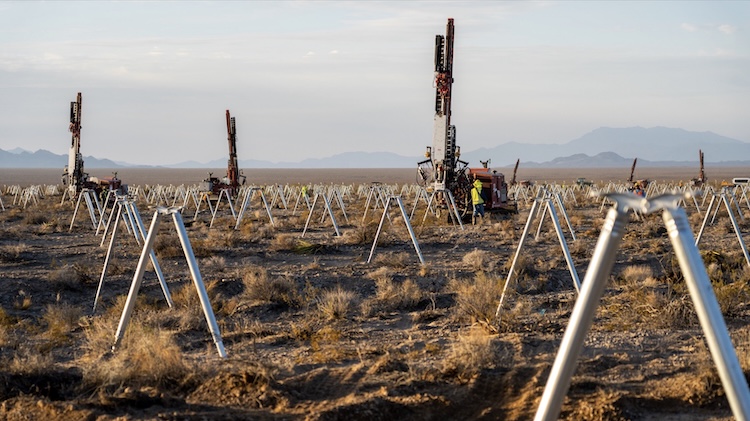Copyright reneweconomy

A major US company has landed a federal grant to introduce its automated pile-driver to Australian solar project contractors, following in the footsteps of a number of robotics trials this year in the sector. The Australian Renewable Energy Agency (ARENA) is funding US solar tracking manufacturer Nextracker with $4.96 million to roll out a new system at several solar projects, including Lightsource bp’s 450 megawatt (MW) Goulburn River solar project in New South Wales (NSW). Unlike ARENA’s previous grants in this space, which went to robot pile drivers and solar panel installers, Nextracker’s is a GPS-guided drill rig that automates the location of where the triangular foundations for the tracking structure above will be screwed in. The company says it can reduce by 20 per cent the amount of time to install foundations and trackers, because it can do the job in a single pass rather than taking multiple steps, and reduced the amount of rework needed to straighten or otherwise correct where the peg has gone in. The GPS pile driller. Image: Nextracker Nextracker Australia’s Peter Wheale says the company has already sold 10 gigawatts (GW) of solar tracking tech in Australia, but the foundation drilling technology is new, having only been used in the US to date. He called the foundation technology a “a breakthrough” for Australian solar because the screw system can be used on steeper, rocky sites that have previously defeated developers as too complicated or expensive to develop. “Simplifying and optimising the most labour-intensive phase of solar construction for any soil or terrain condition is a real breakthrough,” Wheale said in a statement. “By unlocking new categories of land, we’re giving developers and EPCs greater flexibility and reduced project risk while helping Australia accelerate its clean energy transition.” Reign of the robots Robotics is increasingly viewed as the next frontier for Australian solar, allowing developers to make better use of a constrained workforce and build under harsh conditions, such as extreme heat or in deserts. Arena launched its 30-30-30 vision for ultra low cost solar in 2023, a goal of 30 per cent module efficiency and a module cost of 30c/watt by 2030 and ultimately for prices to come down below $20 per megawatt hour (MWh), a third of current prices. In May, ARENA CEO Darren Miller told Renew Economy that robots and AI are critical to accomplishing that goal. In a statement today, Miller said ultra low-cost solar is not the solar Australians are familiar with now. “Current solar PV technology is sufficiently mature and cost-effective to deploy at scale,” he said. “However, much cheaper solar is vital to help to decarbonise [and to] create green export opportunities and support the decarbonisation of hard-to-abate sectors.” Getting the cost of solar down means speeding up installation and taking humans out of the process in order to make 500 MW-plus sized solar projects feasible – in other words, using robots and automation. US robotics company Luminous received a $4.9 million grant from ARENA in July as part of its $100 million Solar ScaleUp Challenge to demonstrate its panel installer at Engie’s 250 MW Goorambat East solar project. Luminous CEO Jay Wong says they were able to install 103 per cent more modules than the contractor’s usual shift target, and with a few tweaks could turn that into 246 per cent – that’s the subject of a phase two ARENA trial. ARENA also funded Build Robotics’ automated pile driver on the same site to the tune of $1.3 million, but did not sponsor the entree of Chinese company Leapting’s Litian Intelligent robot which was deployed at Neoen’s Culcairn solar farm in NSW and Engie’s Goorambat East. At Culcairn, it installed 10,000 solar panels at its first commercial deployment, carving 25 per cent off the project delivery time, and doing the job of three to four humans.



